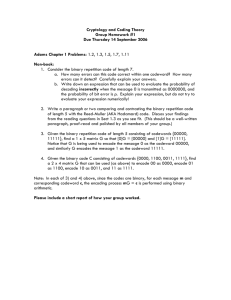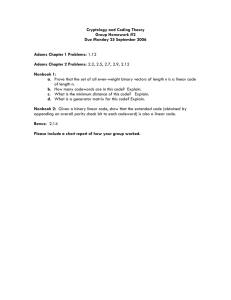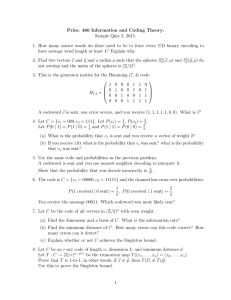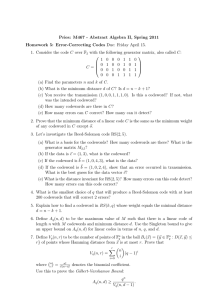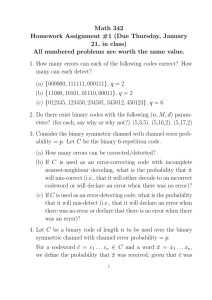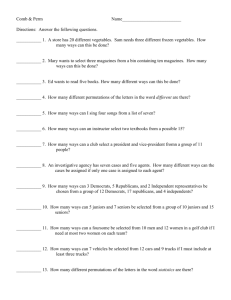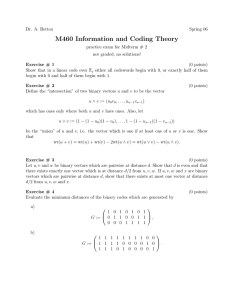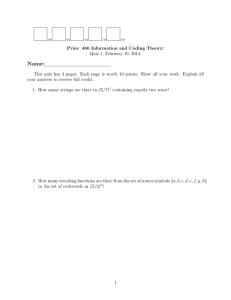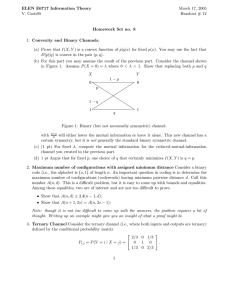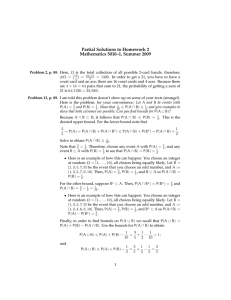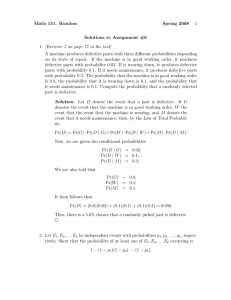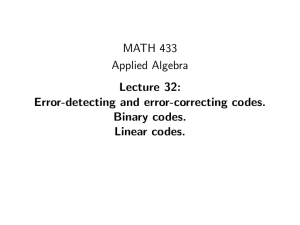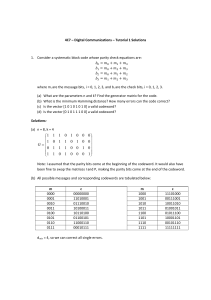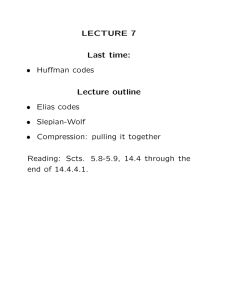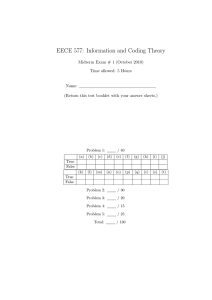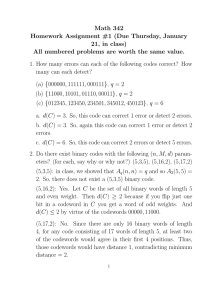ELEN E6717 Information Theory Homework no. 4 February 7, 2005 V. Castelli
advertisement
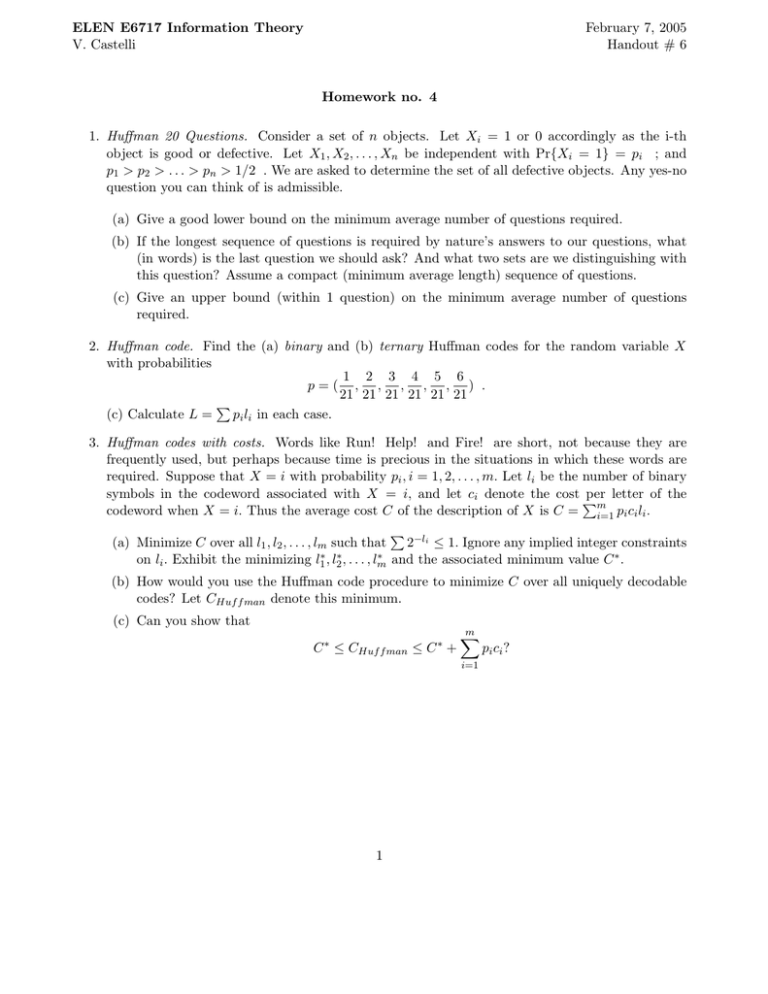
ELEN E6717 Information Theory
V. Castelli
February 7, 2005
Handout # 6
Homework no. 4
1. Huffman 20 Questions. Consider a set of n objects. Let Xi = 1 or 0 accordingly as the i-th
object is good or defective. Let X1 , X2 , . . . , Xn be independent with Pr{Xi = 1} = pi ; and
p1 > p2 > . . . > pn > 1/2 . We are asked to determine the set of all defective objects. Any yes-no
question you can think of is admissible.
(a) Give a good lower bound on the minimum average number of questions required.
(b) If the longest sequence of questions is required by nature’s answers to our questions, what
(in words) is the last question we should ask? And what two sets are we distinguishing with
this question? Assume a compact (minimum average length) sequence of questions.
(c) Give an upper bound (within 1 question) on the minimum average number of questions
required.
2. Huffman code. Find the (a) binary and (b) ternary Huffman codes for the random variable X
with probabilities
1 2 3 4 5 6
p=( , , , , , ) .
21 21 21 21 21 21
(c) Calculate L = pi li in each case.
3. Huffman codes with costs. Words like Run! Help! and Fire! are short, not because they are
frequently used, but perhaps because time is precious in the situations in which these words are
required. Suppose that X = i with probability pi , i = 1, 2, . . . , m. Let li be the number of binary
symbols in the codeword associated with X = i, and let ci denote the cost per letter of the
codeword when X = i. Thus the average cost C of the description of X is C = m
i=1 pi ci li .
(a) Minimize C over all l1 , l2 , . . . , lm such that 2−li ≤ 1. Ignore any implied integer constraints
∗ and the associated minimum value C ∗ .
on li . Exhibit the minimizing l1∗ , l2∗ , . . . , lm
(b) How would you use the Huffman code procedure to minimize C over all uniquely decodable
codes? Let CHuf f man denote this minimum.
(c) Can you show that
∗
∗
C ≤ CHuf f man ≤ C +
m
i=1
1
p i ci ?
